Oakleaf Hydrangeas: The Dramatic Shrub That Blooms In White Or Pink
Oakleaf Hydrangeas: The Dramatic Shrub That Blooms in White or Pink
Oakleaf hydrangeas (Hydrangea quercifolia) are a beautiful and versatile shrub that can add a touch of drama to any garden. They are native to the southeastern United States, and their large, showy flowers can range in color from white to pink to red. Oakleaf hydrangeas are also known for their attractive foliage, which turns brilliant shades of red, orange, and yellow in the fall.
In this blog post, we will discuss the following:
- The different types of oakleaf hydrangeas
- How to grow and care for oakleaf hydrangeas
- The best places to plant oakleaf hydrangeas
- How to use oakleaf hydrangeas in your garden
Types of Oakleaf Hydrangeas
There are many different varieties of oakleaf hydrangeas, each with its own unique characteristics. Some of the most popular varieties include:
- 'Snow Queen': This variety has white flowers that fade to pink as they age. It is a compact shrub that is well-suited for smaller gardens.
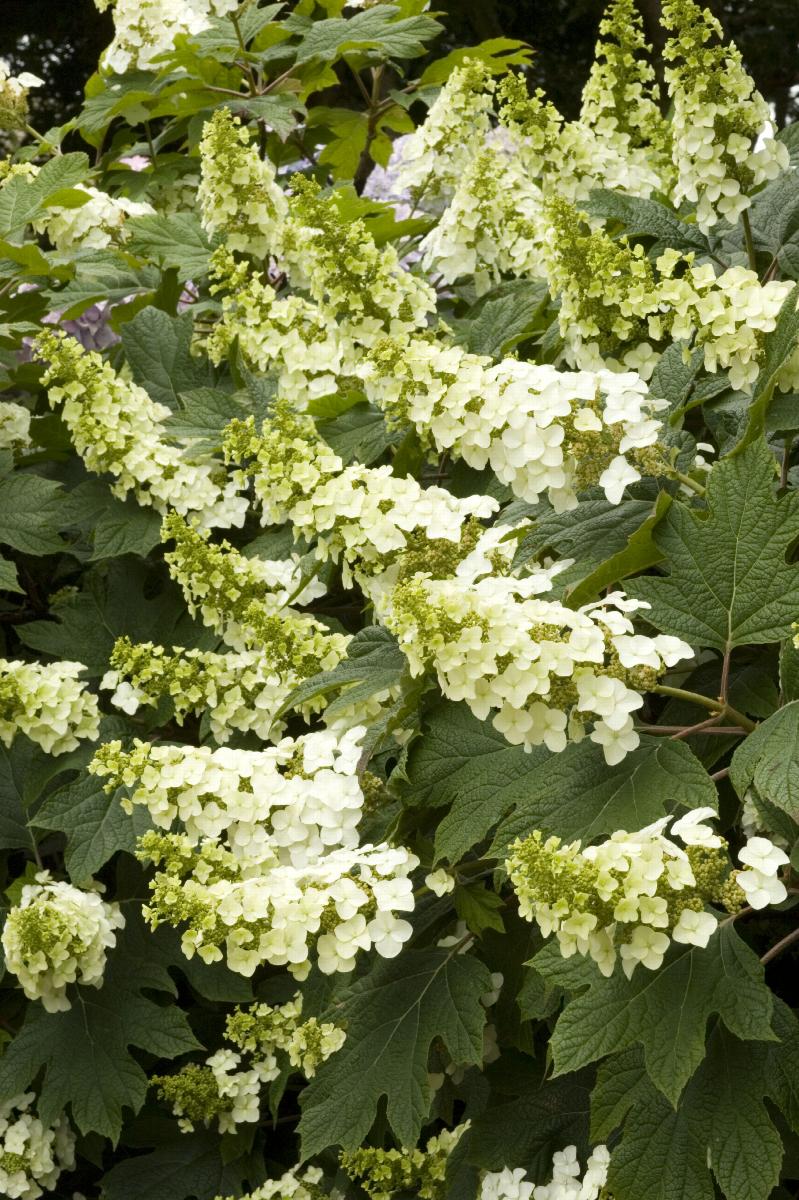
- 'Ruby Slippers': This variety has bright pink flowers that turn red in the fall. It is a larger shrub that is more suited for larger gardens.
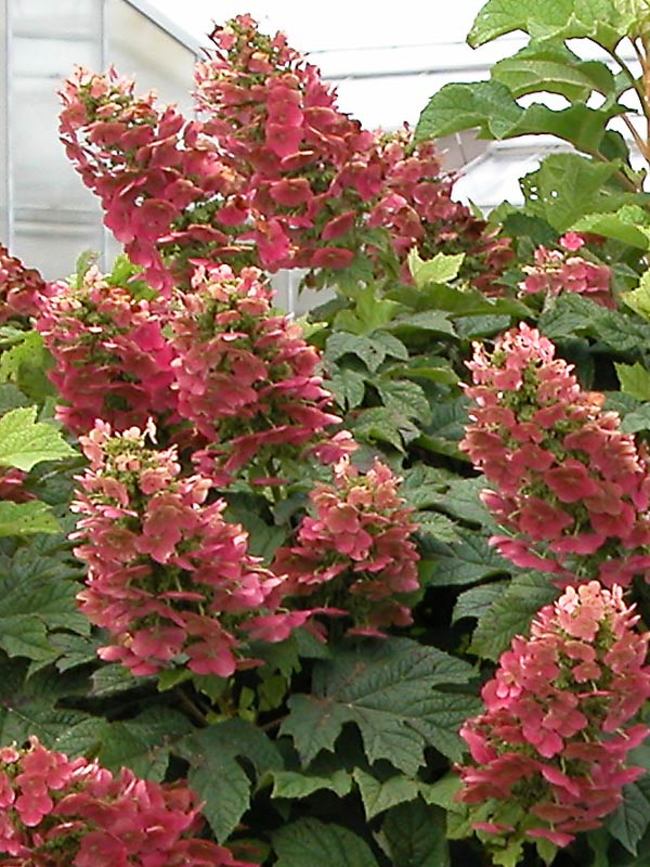
- 'Gatsby Pink': This variety has deep pink flowers that are held in large, showy clusters. It is a vigorous grower that is well-suited for USDA zones 5-9.
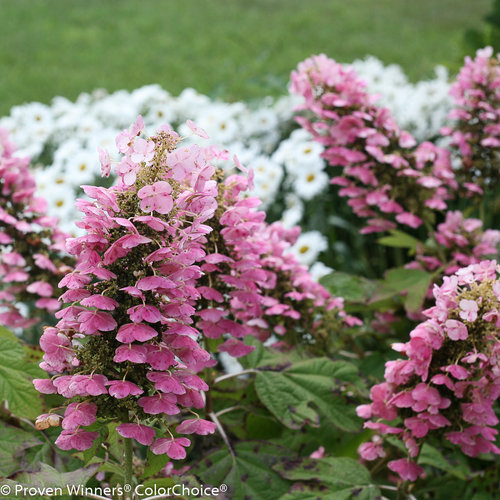
- 'Little Lime': This variety has lime green flowers that fade to white as they age. It is a dwarf shrub that is well-suited for containers or small gardens.
Growing and Caring for Oakleaf Hydrangeas
Oakleaf hydrangeas are relatively easy to grow and care for. They prefer full sun to partial shade, and they need well-drained soil. Oakleaf hydrangeas are also heavy feeders, so they should be fertilized regularly.
Watering: Oakleaf hydrangeas need regular watering, especially during the summer months. The soil should be kept moist, but not soggy.
Fertilizing: Oakleaf hydrangeas should be fertilized twice a year, in the spring and fall. Use a balanced fertilizer, such as 10-10-10, and follow the directions on the label.
Pruning: Oakleaf hydrangeas do not need to be pruned heavily. However, you can remove dead or damaged branches in the spring. You can also prune to shape the shrub if desired.
Winter Care: Oakleaf hydrangeas are hardy in USDA zones 5-9. However, they may benefit from some winter protection in colder climates. Mulch around the base of the shrub to help insulate it from the cold.
Best Places to Plant Oakleaf Hydrangeas
Oakleaf hydrangeas are a versatile shrub that can be planted in a variety of locations. They are a good choice for borders, foundation plantings, and shrub beds. Oakleaf hydrangeas can also be planted in containers, but they will need to be watered more frequently than those planted in the ground.
How to Use Oakleaf Hydrangeas in Your Garden
Oakleaf hydrangeas can be used in a variety of ways in your garden. They can be used as a focal point, or they can be planted in groups to create a hedge or screen. Oakleaf hydrangeas can also be used in mixed borders to add height and interest.
Conclusion
Oakleaf hydrangeas are a beautiful and versatile shrub that can add a touch of drama to any garden. They are relatively easy to grow and care for, and they can be used in a variety of ways. If you are looking for a shrub that will add interest to your garden for years to come, then oakleaf hydrangeas are a great option.
Oakleaf hydrangeas are a beautiful and versatile addition to any garden. They are deciduous shrubs that can grow up to 10 feet tall and wide. Their leaves are large and resemble the leaves of an oak tree. In the summer, they produce large clusters of flowers that can be white, pink, or blue. The color of the flowers depends on the acidity of the soil.
If you are interested in learning more about oakleaf hydrangeas, I recommend visiting Garden Wiki. This website has a wealth of information about the plant, including its care requirements, propagation methods, and pest and disease control. You can also find photos and videos of oakleaf hydrangeas in bloom.
FAQ of oak hydrangea
- Q: What is an oak hydrangea?
A: Oak hydrangea (Hydrangea quercifolia) is a deciduous shrub that is native to eastern North America. It is known for its large, oak-shaped leaves and its showy flower clusters, which can be white, pink, or blue. Oak hydrangeas are hardy in USDA zones 5-9 and can grow to be 6-8 feet tall and wide.
- Q: How do I care for an oak hydrangea?
A: Oak hydrangeas are relatively easy to care for. They prefer full sun to partial shade and moist, well-drained soil. They should be watered deeply once a week during the growing season and less often during the winter. Oak hydrangeas are not as fussy about fertilizer as some other plants, but they will benefit from a light application of fertilizer in the spring.
- Q: How do I deadhead an oak hydrangea?
A: Deadheading an oak hydrangea is important to encourage new flower growth. To deadhead, simply remove the spent flower clusters at the base of the stem. You can do this any time after the flowers have faded.
- Q: How do I propagate an oak hydrangea?
A: Oak hydrangeas can be propagated by seed, division, or cuttings. Seed propagation is the least reliable method, but it can be successful if you have fresh seeds. Division is a more reliable method, but it can be difficult to divide large plants. Cuttings are the most reliable method of propagation, and they are relatively easy to do. To take cuttings, simply cut a 4-6 inch section of stem from a healthy plant and remove the bottom leaves. Dip the cutting in rooting hormone and plant it in a moist, sterile potting mix. Keep the cutting in a warm, well-lit location and it should root in a few weeks.
- Q: What are some common problems with oak hydrangeas?
A: Some common problems with oak hydrangeas include:
* Leaf scorch: This is caused by too much sun or heat. To prevent leaf scorch, plant your oak hydrangea in a location that gets morning sun and afternoon shade.
* Pests: Oak hydrangeas can be susceptible to pests such as aphids, scale, and spider mites. To control pests, spray your plant with insecticidal soap or neem oil.
* Diseases: Oak hydrangeas can be susceptible to diseases such as powdery mildew and leaf spot. To prevent diseases, water your plant at the base and avoid getting water on the leaves.
Image of oak hydrangea
5 different images of oak hydrangea from Pinterest:
- A white oak hydrangea in full bloom. The flowers are large and fluffy, and they have a delicate, sweet fragrance.
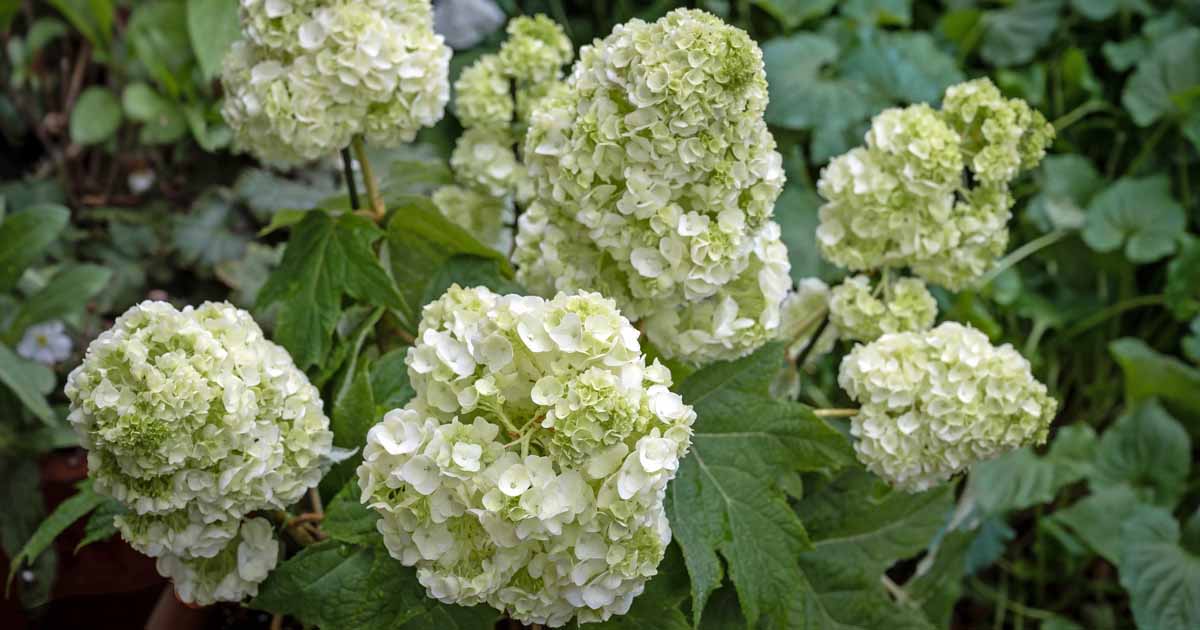
- A pink oak hydrangea in the fall. The leaves are turning shades of red, orange, and yellow, and the flowers are a soft pink.

- A young oak hydrangea plant. The leaves are still small, but they are a deep green color. The plant is surrounded by other flowers, including roses and lilies.
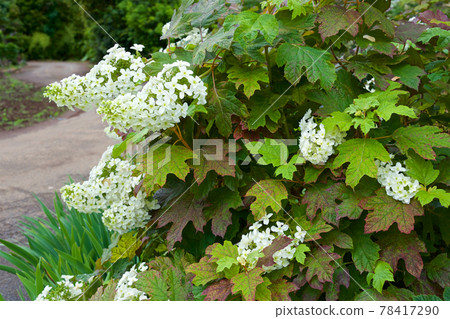
- A close-up of an oak hydrangea flower. The flower is made up of many small petals, and it is a beautiful shade of pink.
- A landscaped garden with oak hydrangeas. The hydrangeas are planted in a row, and they are surrounded by trees and shrubs. The garden is a beautiful sight, especially in the spring when the hydrangeas are in bloom.
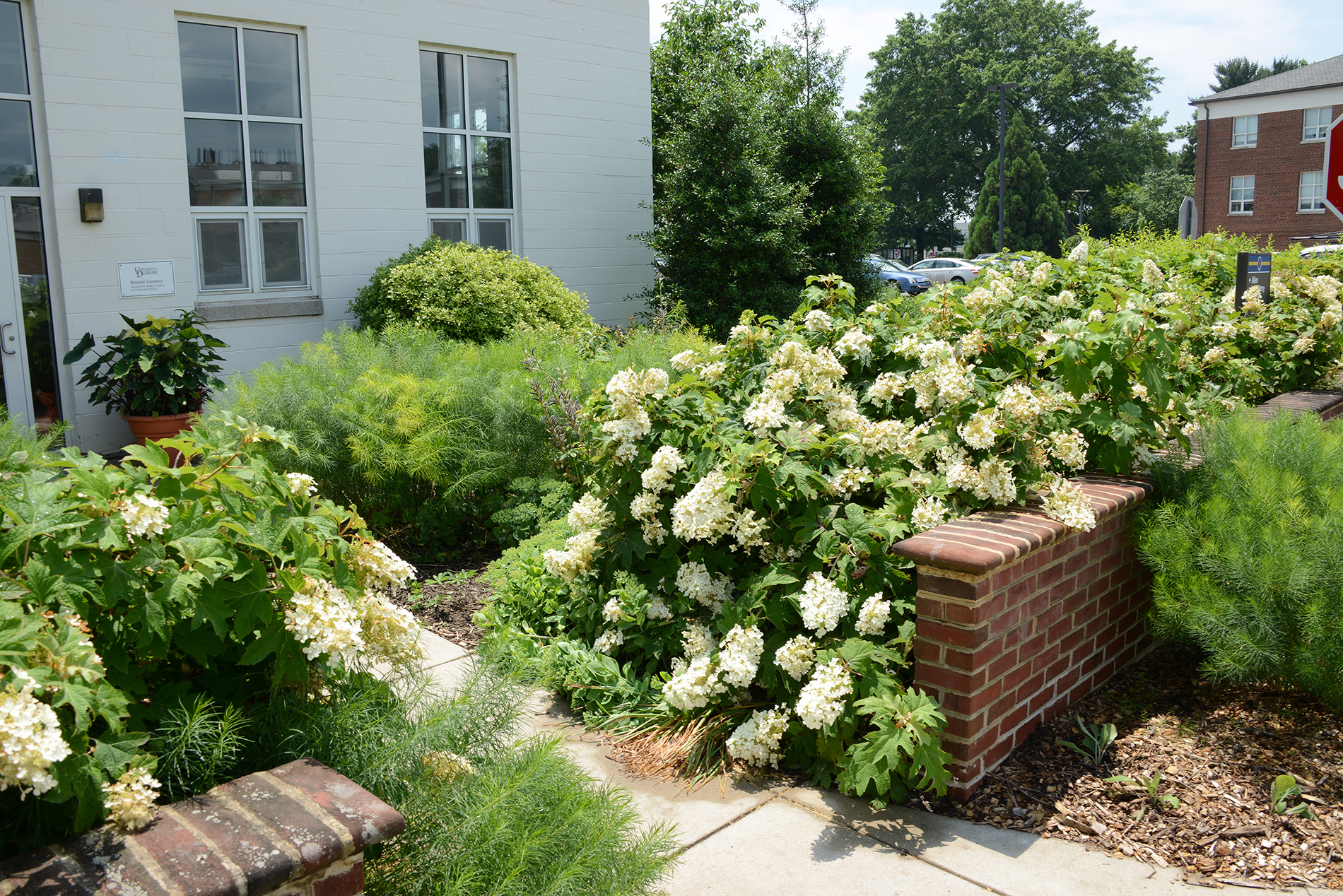

Post a Comment for "Oakleaf Hydrangeas: The Dramatic Shrub That Blooms In White Or Pink"